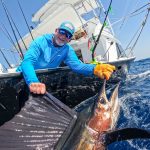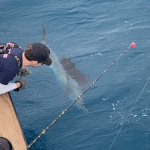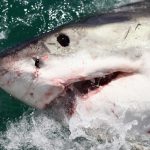ROFFS™ Fishy Times Newsletter 25th Edition: Happy 4th of July/Independence Day from ROFFS™
NEWS
ROFFS™ Handy Simple Guide to Tropical Storm Development
As we are in tropical weather season we wanted to provide some basic information for you to better evaluate the development and likely motion of tropical depressions, tropical storms and hurricanes. We are providing this based on our observations, training and experience as oceanographers, and we remind you that we are not meteorologists. However, as we have been hearing and reading some misleading statements by the media weathermen and weatherwomen and media meteorologists we thought that by providing you this simple guide that you will be able to begin to understand the development and likely motion of these tropical systems.
When watching such systems we think that you should:
Evaluate the central pressure of the system; If dropping below 1010 millibars atmospheric pressure it is likely that a depression or storm is developing. If below 1000 millibars pressure, it is likely you are dealing with a dangerous hurricane. Please click HERE to read more on this topic on our website…
Northeastern U.S. Ocean Conditions 29-30 June 2014
Below is a ROFFS™ infrared satellite composite image for 29-30 June 2014 showing the very rare circulation pattern of the Gulf Stream between Cape Hatteras, N.C. and the Gulf of Maine. Notice how the Gulf Stream splits into three parts to the south of the Nantucket Shoals, pushing inshore both to the east and west. This unusual Gulf Stream circulation is re-supplying a blended blue to blue, relatively large Gulf Stream eddy feature (south of Cape Cod) and associated Gulf Stream filaments with a fresh influx of blue water and potential new fish stocks.

Please Remember to Place Your Orders Early for 4th of July Fishing as we Continue to be Busy!
We are sure to be busy again this week in anticipation of 4th of July/Independence Day fishing! Please remember to call the office NOW (800.677.7633) and place your orders EARLY. Please click HERE to place your orders for 4th of July week/weekend on our website…
Updated Catch Reports Section of ROFFS™ Website
Be sure to visit the section titled “Catch Reports” located under the “Insights” tab on our ROFFS™ website that will feature current catch reports from areas such as the Northeastern U.S., North Carolina/Hatteras, South Carolina/Georgia, Florida, the Florida Keys, the Bahamas, and the Gulf of Mexico. We continue to post weekly updates in this category so please check back often. Please click HERE to view last week’s catch reports…

ROFFS™ Recent Tournament Results
Congratulations to our recent tournament winners!
Cape May Marlin and Tuna Club Canyon Kickoff (NJ): 1st Place Heaviest Stringer Tuna & 1st Place Heaviest Tuna Captain Ricky Wheeler & Richard Betzendahl (Fin-Addict); 2nd Place Points Walt Koller (Nasty Habit).
Gulf Coast Outboard Classic (AL): 2nd Place Tuna & 3rd Place Tuna Cliff Kennedy (Hyer Standards).
Carolina Billfish Classic (SC): 1st Place Billfish Release Captain John Thomas, Harry Johnson Jr., Francis Johnson, Rob Johnson, James Johnson, Justin Condor & Rob Wynne (Petrel); 1st Place Top Lady Angler & 1st Place Tuna David Sykes, Captain Dan Woody, Holly McAlhaney & John Votaw (Syked Out); 1st Place Top Junior Angler Captain Gary Wyatt & Thomas Henry Key (Sportsman); 2nd Place Billfish Release Graham Eubank, Manly Eubank & Captain Mike Glaesner (Sportin Life).
Please click HERE to view the newly updated 2014 winners list on our website…
ROFFS™ Fish of the Week – Vampire Squid
According to the Monterey Bay Aquarium, which last month acquired one of these amazing critters, vampire squid are an ancient species that possess characteristics of a squid and an octopus.
Its Latin name, Vampyroteuthis infernalis, translates to “vampire squid from hell.”
Contrary to its name, however, the vampire squid does not feed on blood. Rather, it scavenges largely on marine snow—organic detritus falling through the water column—and decaying animal carcasses. The richly colored critter boasts incredibly large eyes and can turn itself inside out to escape predators.
Vampire squid are thought to reside at lightless depths between 2,000 and 3,000 feet.
Aside from the Gulf of Mexico, they’ve been observed in the Gulf of California (Sea of Cortez) and off Monterey Bay.

If you do not want to wait for our next Fishy Times newsletter, please visit us in the meantime to get all your fishing news on Facebook, Twitter, YouTube and on the web. Safe and successful fishing until next time!






